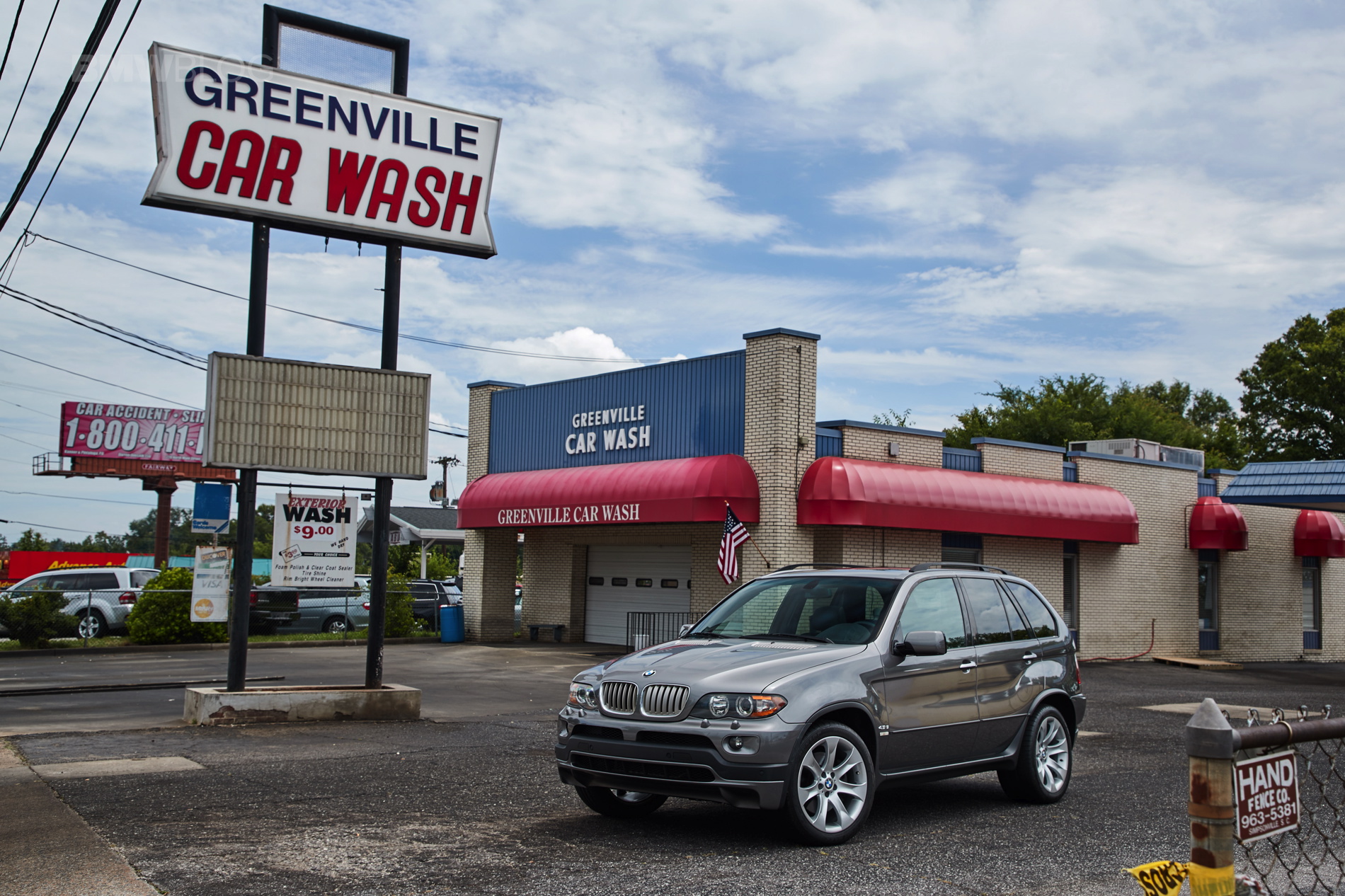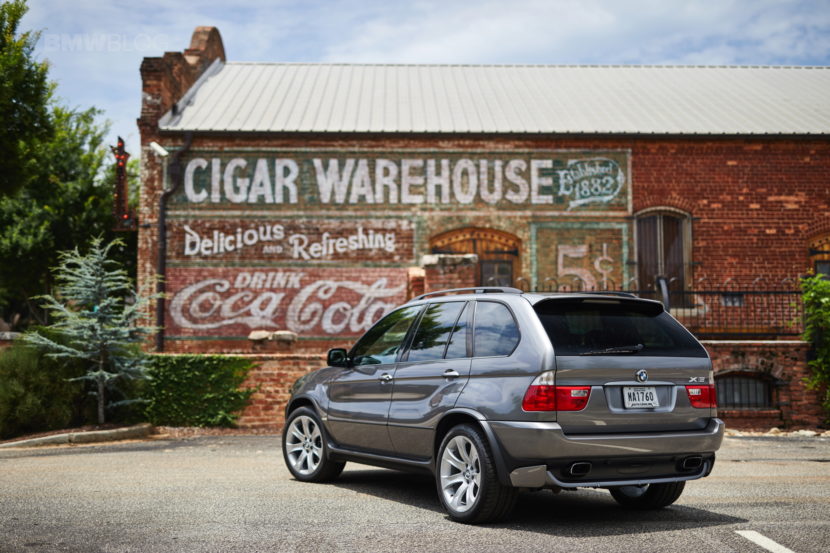The E53-generation BMW X5 was a monumental vehicle for the brand. While its existence was criticized at first, by a BMW fanbase faithful to its traditional values, its entry into the brand’s lineup skyrocketed sales like no other car before it. Those incredible sales helped BMW to finance new and exciting projects, helping to shape what the brand is today. While the E53 X5 was BMW’s first ever SUV, it now has seven, with an eighth on the way. Still, the original might be the best.
Thanks to its well-aged looks, simple but elegant interior, and surprisingly enjoyable driving dynamics, the E53 BMW X5 is as good to drive today as it was back in 1999. Actually, it might feel better now, as we’ve all become so used to numb and uninspired SUVs. What’s even better about the X5 is that almost anyone can have one — they’re dirt cheap.
Even a quick glance at some local classifieds and you’ll likely find a BMW X5 for sale for just a few thousand dollars. Mileage may vary, both literally and figuratively, but that doesn’t mean you can’t find an X5 on the cheap if you’re willing to put up with a few problems. And problems you will have to put up with, that’s for sure. Which is why we’ve put together this handy-dandy buyer’s guide; what to look for, pre-purchase inspections, and preventative maintenance; to help you get the right E53 BMW X5. Of course, you can always get a BMW Extended Warranty to “insure” some of these issues.
What to Look For Before You Buy
If you find an E53 BMW X5 you like, for a price that works for you, there are a few things to check for. In the U.S. market, there were only two engines available; the 3.0 liter inline-six and a 4.4 liter V8. Both are known to have their issues but the inline-six is typically the cheaper, easier engine to repair. However, there are things to look for on both engines to make sure they’re running well.
For the 3.0 engine cars, the main things to look for the CCV (Crankcase Ventilation) valve, VANOS system, and the valve cover gasket. The CCV valve wears over time and will make the engine burn oil. You can check this by monitoring cold start to see if it starts rough or has a bit of blue smoke from its exhaust. Also, check to see if there’s yellow sludge under the oil filler cap; if it’s there, beware.
If the VANOS variable valve timing system goes bad, it sounds like a bunch of marbles rattling in a tin can, so just put your ear to the front of the engine and listen. Typically, it’s loud enough for you to hear from afar but check for the origin of the sound just to be sure.
Also, the valve cover gasket will go bad at around 100,000 miles and, if it’s not replaced, the engine will leak and burn oil. You can tell if the gasket is bad by checking the outside edges of the valve cover to see if it’s grimy and oily.
As for the 4.4 liter V8, the most common failure is the valley pan gasket. In between the banks of the V8’s cylinders, the “valley”, there’s a coolant pan that allows for a flow of coolant between the banks for better cooling. It’s a clever design but the gasket for the valley pan fails like any other gasket, due to extreme heat over time. When that happens, it leaks coolant. While it’s not an extremely difficult job, it is a time consuming. DIYers can almost certainly handle it but its time-intensive nature makes it expensive for shops to do. So, if you’re not a DIYer, consider that before buying.
All E53 X5s suffer from transmission issues after 100,000 miles, so be sure that you check to see if its transmission was serviced at all before buying.
Preventative Maintenance
Like all German vehicles, preventative maintenance is necessary to keeping you car for a long time. Simple things like replacing relatively inexpensive valves, gaskets, and hoses can keep parts from failing, saving you tons of time and money. For instance, the main reason VANOS systems fail is because of the oil tube that feeds them tears or gets clogged, which deprives the system of oil. Replacing that tube, which is cheap and easy, can save the very expensive VANOS from failing.
The main reason for CCV values is similar; there are several hoses that connect to it, which often crack or tear. Those hoses can be replaced for a lot less than if you need to replace the entire CCV. So if your CCV is functioning, just replace all the hoses, which can be done by a DIYer in just a couple of hours.
It’s also good practice to just replace all of the gaskets, belts, and hoses that you can, as soon as you buy the car. Also, change out spark plugs and change the oil almost immediately. That will help keep most points of failure safe for awhile.
Electrical Gremlins
One of the areas that has plagued the E53 BMW X5 since its debut is its electrical system. E53 X5s suffer little electrical gremlins constantly, causing all-wheel drive issues, air suspension issues, sensor failures, window regulators, and countless others. They’re the sorts of issues that are hard to prevent, as they seemingly come out of nowhere, and can cost a lot of money to fix. Some are simple and cheap to fix but others can be costly. So beware of such issues.
Problematic but Charming
Of all the BMWs from that era, the E53 X5 is about the most problematic. In fact, it was probably the most problematic BMW until the E65 7 Series came out. However, that doesn’t mean it isn’t worth getting now. If you’re a handy DIYer that can tackle most problems yourself, you can likely sort out an X5 on the cheap. Considering that they’re so cheap to buy right now, it might be worth taking a shot at owning one, if you’re up to the potential challenge.
It’s also a great car to drive. It handles surprisingly well for an SUV, is very comfortable, and has good interior space. As an inexpensive daily driver, the E53 BMW X5 is a good car, so long as you can handle the maintenance.
If you’re looking for a BMW Extended Warranty, we recommend ENDURANCE and CARCHEX.







































































